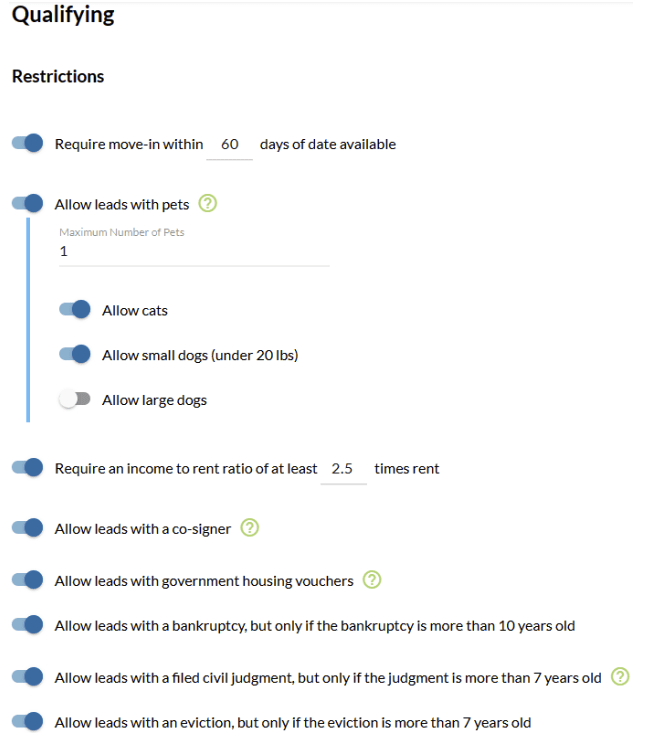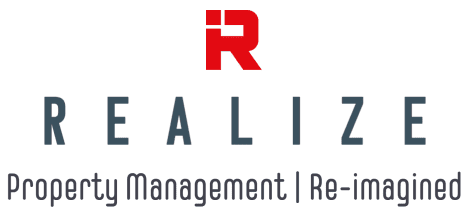There are a few misconceptions about housing vouchers that investment property owners are presented with…before we get there, maybe a moment to clarify that not all vouchers are Section 8 vouchers…well, at least not at first.
The 5 misconceptions this article covers are:
1- Section 8 tenants are going to trash my unit
2- Subsidizing my unit subjects me to higher standards and government control
3- Leasing to a Section 8 tenant will lead to unqualified tenants occupying my unit
4- Section 8 rents remain steady forever
5- Rent increases are difficult to push through once a lease is signed
If you want to take a deep dive, you can learn more about Housing Choice Vouchers here: HCV Programs and Initiatives | HUD.gov / U.S. Department of Housing and Urban Development (HUD)
The interesting thing about the voucher system is there are a multitude of vehicles used to get folks housed, but ultimately, outside of project-based and specialty vouchers, almost all of them originate or turn into Section 8. And it’s important to note that housing choice vouchers can be administered by agencies other than the local public housing authority…it’s rare but does happen…for the purpose of this discussion, I will be referring solely to the “housing authority” as a catch all.
Housing and re-housing humans in America is such a problem that a host of local level agencies have large checkbooks to pay deposits and rent until tenants can get stable or secure a voucher…and if you plan to operate in the C-class asset space, you will more than likely see your units occupied by voucher holding tenants at some point in your career. After managing around 170 subsidized units, we have seen it all…here are a few common misconceptions still floating around out there;
before we jump into this, I’m going to use the word “poor” and “poor people”…there is no derogatory intent…in reality, unless you’re in the 1%, we’re all just different levels of poor.
1- Section 8 tenants are going to trash my unit
Not entirely true, but we can say the lifestyle that many poor people promote requires a lot of reminders on how to be a decent human being. Just because someone has a Section 8 voucher…or because they are poor, doesn’t mean they will live like a slob. Some of the cleanest folks we house are Section 8 voucher recipients. That said, there is certainly a larger oversight component here…routine on-site presence is a must.
Quick Tip: We suggest requiring at least semi-annual mandatory inspections of every unit you own…and even more frequently for voucher tenants. We drive by every unit we manage every 30-days to spot signs of instability and possible lease violations. We take a picture of the front and back of the property and issue immediate violation notices if anything is out of the ordinary.
Whenever we onboard a new property/unit, we schedule recurring preventive maintenance for the;
- Monthly drive-by inspection
- Quarterly furnace filter change
- Quarterly pest control
- Semi-annual life safety
These core inspections are a recurring calendar event and provide ample opportunity to be at and in every unit we manage to spot possible issues very quickly.
It is true that the housing authority will complete an annual recertification to verify the tenant still qualifies for the voucher, but a lot can happen over a 12-month period….and busy housing authorities may gloss over issues, simply because they do not have the resources to manage caseloads. One of the most important factors to monitor is unauthorized occupants in the unit…we’ve seen this time and time again when a boyfriend, cousin, or family member moves into the unit and brings trouble with them…outside influence can create a toxic environment and promote instability.
Quick Tip: The housing authority is an excellent resource for getting quick control of this scenario. Upon formal request and issuance of your own lease violation notice, the housing authority will follow suit and issue a formal lease violation. This is a reality check for tenants that they are at risk of losing their voucher unless they follow the occupancy rules…once you lose a housing voucher, the odds of getting another one in the future are slim to none.
2- Subsidizing my unit subjects me to higher standards and government control
Sort of, but not entirely. Yes, you are subsidizing your private unit to the government…and by accepting government money for rent, you may be subject to oversight that private pay landlords are not….but this is not a bad thing. The upfront Housing Quality Standards (HQS) inspection is a helpful measure…it ensures the unit is safe and 100% ready for occupancy.
You can see an HQS inspection form here: 52580A.PDF (hud.gov)
Outside of that, the only real interface with the local housing authority will be an annual recertification, which may or may not entail another HQS inspection. In reality, once the voucher tenant is in place, there is little else to do but collect rent and manage expectations. It is important to note that most of the time, letting an annual lease roll from annual to at-will (month-to-month) is the best course for voucher tenants…if you do elect to renew on an annual basis, you will effectively need to start the entire lease up process over again and “re-subsidize” the unit…meaning you will need to go through the HQS process again, and possibly exposing yourself to an interruption in payment. Lease changes can be made without renewing the lease, but they do require approval from the housing authority.
Quick Tip: We use the actual HQS Inspection form from our local housing authority to complete a “mock” HQS Inspection before we lease to any Section 8 tenants. We are able to spot issues before preventing the unit from being approved for the subsidy. And we schedule maintenance staff to be present at every HQS Inspection so they can fix issues right then and there if they come up…failing an inspection for a burned out light bulb is a terrible feeling.
3- Leasing to a Section 8 tenant will lead to unqualified tenants occupying my unit
Underqualified may be a misstatement- the qualifications are just different. For example, setting income requirements such as 3x the monthly rent is not an option because a lot of folks on vouchers do not have wages….they simply will not meet any income standard you set for occupancy. This is not a bad thing…if your tenant does not have a job, they will never be unemployed and miss a rent payment.
I wrote a blog post about this topic here if you are interested: Why I Prefer My Tenants To Be Unemployed | Realize Property Management, LLC (realizepm.com)
As far as the background goes, voucher holding tenants are subject to the exact same standards as private paying tenants…there is no special treatment just because you have a voucher. One important thing to note is that the “profiles” of many voucher holding tenants are indistinguishable…meaning that if you have 20 voucher applications and you redact the identifying information…you would basically have one application with minor differences…same with credit and background.
Poor people are poor for a reason and the circumstances that led to them landing in poverty are eerily similar. Some of the more common issues we see are family instability…job instability, and income instability…everyone will have a criminal record, but mostly mundane stuff like repeat traffic offenses…it’s usually a progression like speeding in school zone…leading to another ticket for driving without a seatbelt, followed by a suspended license, then driving without a licenses, and oftentimes, driving on expired tags or with someone else’s tags. The progression of bad decision making is overwhelming.
Another common theme is poor credit…almost every voucher recipient tenant we have ever screened has a 500-credit score…again, usually arrived at through predatory retail or educational provider practices, creating a vicious cycle of keeping poor people poor…but that is a discussion for another day.
Quick Tip: We recommend removing any filters you have set up on pre-qualification software that may pre-screen a good section 8 tenant out of the pool of applicants. And also, removing any application fees for section 8 applicants…you would not believe how many people are unable to submit an application over $20. When leasing to section 8 you want the biggest applicant pool possible to find the most qualified tenant. Here is a look at the screening criteria we start with:

There should be “if/then” logic in your screening system if you use one…”if the applicant has a housing voucher then do not apply the income requirements.” The only other possible area to flex is the number of pets, but monitor this one closely.
4- Section 8 rents remain steady forever
This is a big one…and it’s normally not true. While your total rent may stay the same during any 12-month period, there are often fluctuations in the tenant obligation and housing authority obligation…if the housing authority receives a trigger for income change, they will look at the rent and reassess who pays what…keep in mind that the housing authority has a budget…if they have the opportunity to pass some of the rent back to the tenant, they will do it. This means you may see a change or two a year where the tenant portion of rent fluctuates…you’ll get a notification of the event with an effective date of the change. It’s important to watch the lease ledger closely to make sure you are accurately recording who pays what….this will help avoid unnecessary pay-or-quit notices or unjustified eviction filing. Most of the rent review process is outside of your control, but you should stay as actively involved as possible.
Quick Tip: Keep an eye on the mail…housing authorities are usually old school, and these notifications of change will come through the mail…if you miss one, you may end up with an inaccurate tenant ledger, or worse, incorrectly filing an eviction for non-payment. There are oftentimes delays with the new housing authority portion of rent to kick in…these cases must be monitored closely. Having a property management solution that allows you to input future rents that automatically apply is a must.
5- Rent increases are difficult to push through once a lease is signed
This is another “sort of” true item…the one thing to pay attention to is the lease cycle…while you should have automatic rent increases built into all leases, Section 8 requires more planning. The basic requirement is that the proposed increase be submitted to the housing authority 60-days before the rental rate change…depending on your location and housing authority, that may mean that you have to wait until the end of the initial lease term to make the request…so, you’ll miss out on 2 months of increased rents. On the other hand, and what I would always recommend is submitting the request for increase 60-days before the lease expires…if they accept, the increase will coincide with the annual recertification (which really happens between 9-12 months after the lease start anniversary)…this means that the tenant file is already being reviewed by the housing authority…this is the best time to change the rent.
Quick Tip: Keep in mind that a rental rate increase needs to be justified…so, as your operating costs increase from things like utility rates climbing, cost of insurance increasing and property taxes changing, you’ll be better suited to get an increase approved. If you combine this with continuous improvements to your property, you’ll get a solid increase year after year. Your increase request should always outline what your increased costs are and what improvements have been done to the property….formality is the best approach, so having a standard increase request document is a must.

Brandon S. Sturgill is the principal broker of Realize Property Management Group, headquartered in Columbus, Ohio. He has experience managing over 500-units of scattered site and multifamily housing. Brandon can be reached at Brandon@RealizePM.com
